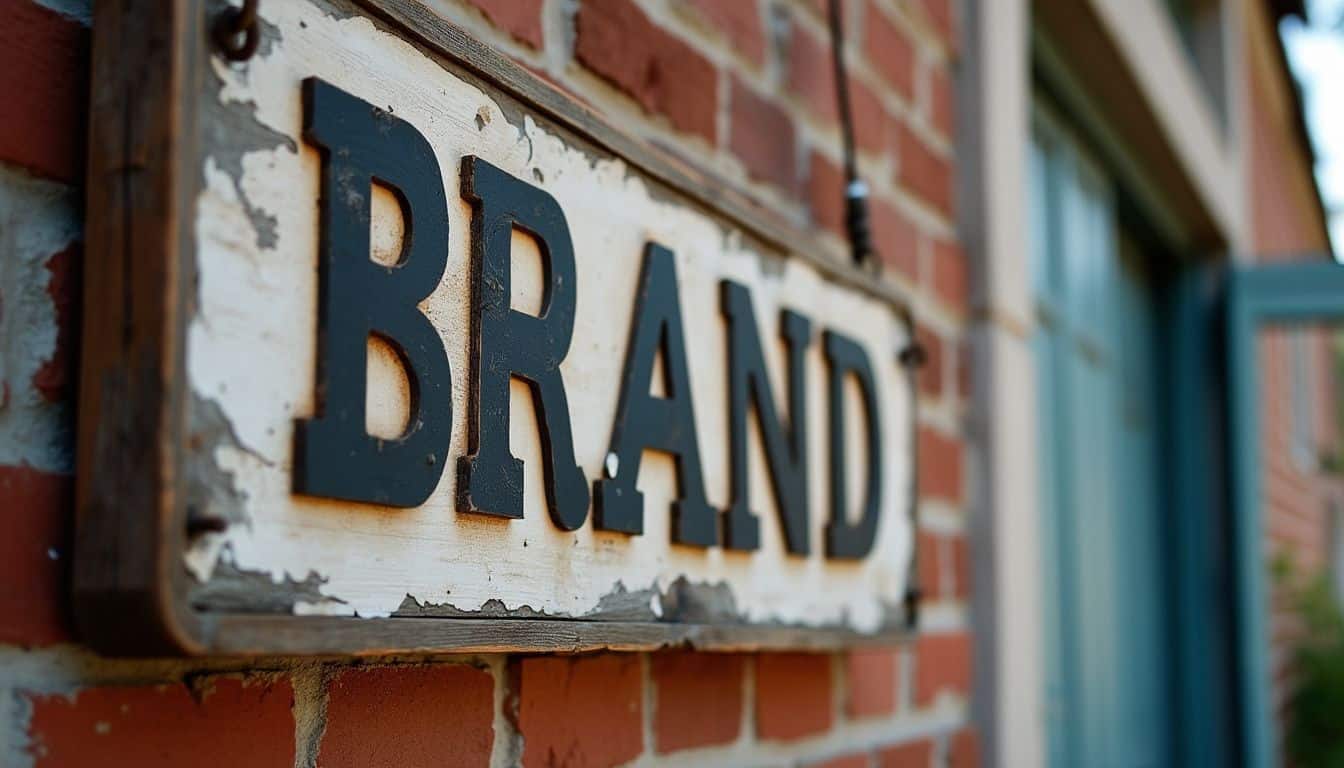Ever scratched your head wondering, “What is a brand and branding?” You’re not alone. Brands are everywhere, shaping our choices daily. This article will unpack 8 key insights about brands and branding.
It’s your roadmap to brand mastery. Ready to level up? 3
Key Takeaways
A brand is more than a logo; it’s the overall impression people have of a product or company. Branding shapes these impressions through various strategies.
Brands have evolved from simple cattle markings to complex digital identities. The first U.S. trademark law was established in 1876, paving the way for modern branding.
Strong brands combine visual elements (logo, colors), core values, and differentiation strategies. 53% of consumers prefer brands that take stands on social issues.
Effective branding boosts business value, increases customer loyalty, and influences purchasing decisions. 62% of consumers say brand values affect their choices.
Future branding trends include purpose-driven messaging, augmented reality experiences, and user-generated content. Brands that blend technology with authenticity are likely to succeed.
Table of Contents
What Are Brand and Branding?

Brands are more than just logos or names. They’re the whole package – the feelings, ideas, and experiences people have with a product or company. Branding? It’s the art of shaping those impressions… and boy, is it a wild ride!
Defining the Essence of a Brand
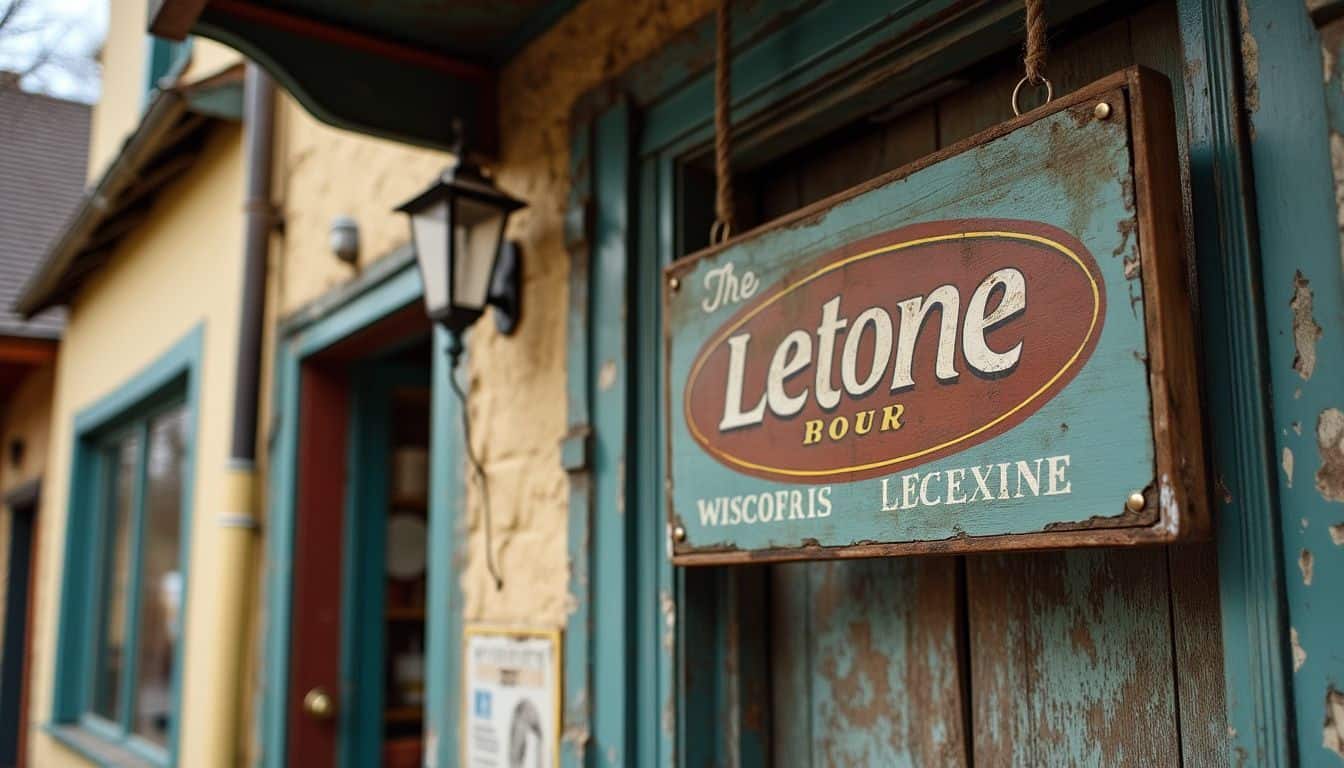
A brand is more than just a logo or catchy slogan. It’s the gut feeling people get when they think about a company or product. Brands tap into emotions, creating a connection that goes beyond mere features or benefits.
They shape how folks perceive a business, influencing choices and loyalty. 1
A brand is the set of expectations, memories, stories and relationships that, taken together, account for a consumer’s decision to choose one product or service over another. – Seth Godin
At its core, a brand is a promise. It tells customers what they can expect from products and services. 2 This promise stems from the Old Norse word “brandr,” meaning “burn.” Just like ranchers marked their cattle, companies now mark their offerings with distinct identities.
These identities help products stand out in crowded markets and build trust with consumers.
As noted at experiencetheblog.com, in today’s rapidly evolving marketplace, brands are increasingly defined by the experiences they offer. These experiences go beyond traditional marketing, creating empathy, building trust, and providing innovative value to customers. This shift highlights how modern branding is as much about customer interaction and engagement as it is about visual identity and messaging.”
Exploring the Branding Process

Branding is like cooking up a tasty dish for your biz. You mix together logos, colors, and words to create a unique flavor. This recipe tells folks what your company’s all about. It’s not just slapping a label on stuff.
Nope, it’s way more. You gotta think about how people feel when they see your brand. It’s about making a connection that sticks. 2
Getting your brand out there takes work. You’ll need to spread the word on social media, emails, and your website. Don’t forget Acme Press business envelopes for that pro look.
Every little thing counts. Your brand should pop up everywhere your customers are. It’s like leaving breadcrumbs for them to follow right to your door. The key? Keep it steady. Your message should be the same, no matter where folks see it. 3
The Evolution of Branding
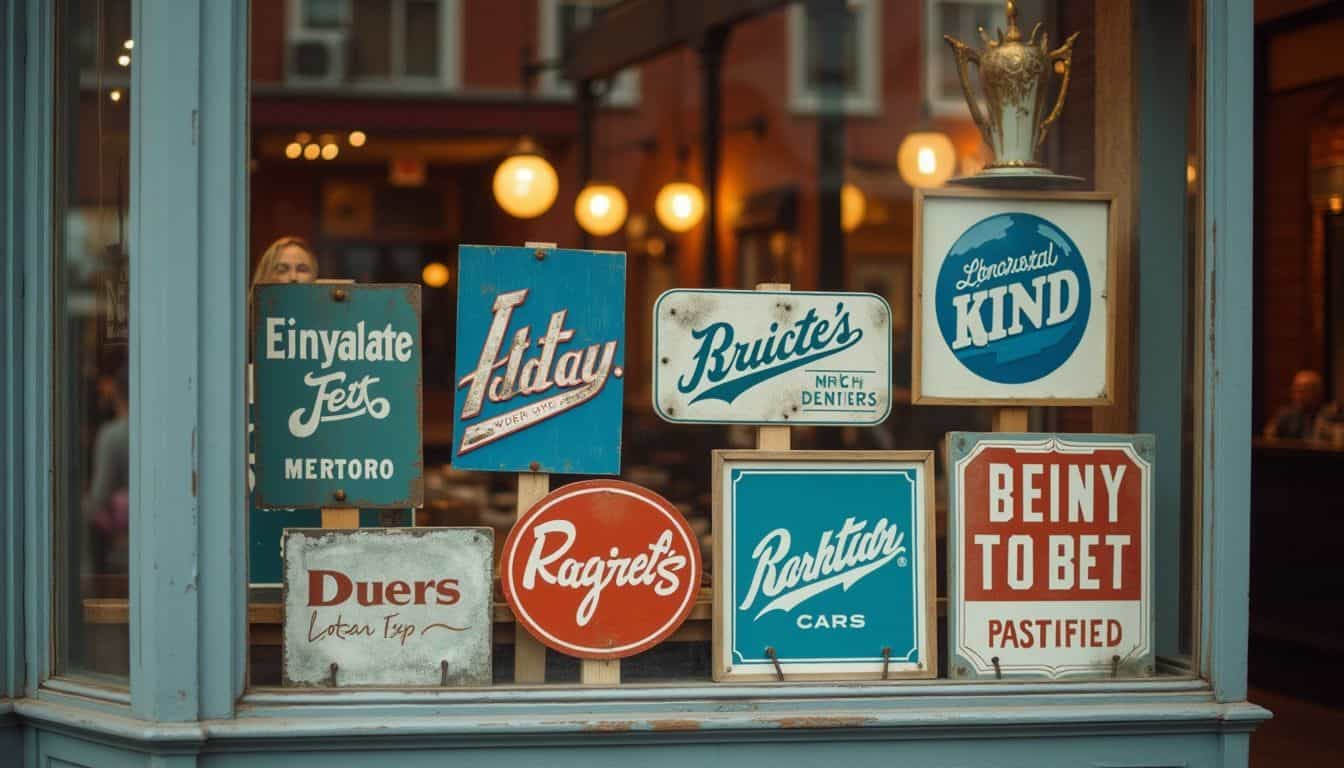
Branding has come a long way since its humble beginnings. It’s evolved from simple cattle markings to complex digital strategies that shape our buying habits.
A Historical Perspective on Brands

Brands have been around for ages. Ancient artisans left marks on their goods to show who made them. This simple act was the start of branding. Fast-forward to the 1800s, and things got interesting.
The Industrial Revolution kicked off, and suddenly, there were tons of products. Companies needed ways to stand out. 5
Modern branding took off. In 1876, the U.S. set up its first trademark law. This was huge! It let businesses protect their names and logos. 4 Then came Coca-Cola in 1886. It became one of the first global brands, showing the power of good marketing. 4 By the 1920s, companies were giving their brands personalities. They wanted customers to connect with them on a deeper level. It worked like a charm!
Shifts in Modern Branding Practices
Modern branding has taken a wild turn. Gone are the days of just slapping a logo on a product and calling it a day. Now, it’s all about digital presence and social impact. Brands are diving headfirst into social media, making it their go-to ad strategy. 6 They’re not just selling stuff; they’re taking stands on big issues. In fact, 53% of folks prefer brands that speak up about social matters.
Tech is shaking things up big time in branding. 7 Augmented reality (AR) and virtual reality (VR) are changing how we interact with brands. It’s like stepping into a whole new world! User-generated content is also huge now.
Brands are letting customers tell their stories, creating a more genuine vibe. And get this – some brands are even trying to make the world better. It’s called regenerative branding, aiming to create value for society and the planet.
Pretty cool, huh?
The Components of a Strong Brand

Ever wondered what makes a brand stick in your mind? It’s not just a cool logo or catchy slogan. Strong brands are built on a mix of visual punch, core beliefs, and smart strategies that set them apart from the crowd.
Let’s dive into the secret sauce that makes some brands unforgettable….
The Role of a Logo and Visual Identity
Logos pack a punch in branding. They’re the face of a company, helping folks spot it from a mile away. A good logo sticks in your brain like gum on a shoe. It’s simple, eye-catching, and tells a story without words.
Think Apple’s bitten apple or Nike’s swoosh – they’re instantly recognizable. 8
Visual identity goes beyond just the logo. It’s the whole package – colors, fonts, and design style. These elements work together to create a vibe that screams, “This is us!” A strong visual identity helps a brand stand out in a crowded market.
It’s like wearing a snazzy outfit to a party – you want people to notice and remember you. 9
A logo is the beginning of your company’s branding and conveys your business’s values and directs brand loyalty. – Tailor Brands
Now, let’s explore the core values and mission in branding…
Core Values and Mission in Branding
Moving from logos, let’s talk about what’s inside a brand. Core values and mission are the heart of any brand. They’re like a compass, guiding a company’s actions and choices. 10
A brand’s mission tells folks what the company does and why it matters. It’s the big goal they’re chasing. Core values? They’re the rules a company lives by. Think of them as a brand’s personality traits.
These values shape how a business acts and treats its customers. When done right, they create a strong bond between a brand and its fans. It’s not just about selling stuff – it’s about standing for something bigger. 11
Strategies for Differentiation
Brands need to stand out in a crowded market. Smart companies use clever tricks to make their products special. They might focus on quality, like Apple’s sleek designs. Or they could offer amazing service, like Zappos and their free returns.
Some brands, like Tesla, push innovation to set themselves apart. The key is finding what makes your brand tick and shouting it from the rooftops. 13
But it’s not just about being different. You’ve got to hit home with your target crowd. Take Patagonia – they’re all about saving the planet. This clicks with eco-conscious shoppers.
Or look at Dollar Shave Club. They made razors fun and cheap, winning over guys tired of pricey blades. The best brands know their audience inside out. They craft messages that speak right to their customers’ hearts…
and wallets. Next up, let’s chat about why branding matters so much in today’s world. 12
Why Branding Matters

Branding isn’t just a fancy logo or catchy slogan. It’s the secret sauce that makes customers choose you over the competition. Good branding builds trust, creates loyal fans, and boosts your bottom line… big time!
Its Impact on Consumer Choices
Branding packs a punch in how we shop. It’s like a secret code that whispers to our brains, “Hey, pick me!” Strong brands make us feel good about buying stuff. They tap into our emotions and values.
Think about it – you might grab that fancy phone because it makes you feel cool. Or you might choose eco-friendly soap ’cause it aligns with your green values. That’s branding at work! 15
Brands also shape what we think products are worth. Luxury brands? They’re pros at this game. They make us believe their stuff is super special. We end up paying more for that designer bag or watch.
It’s not just about the product – it’s about how it makes us feel. Brands can boost our self-esteem and help us fit in with certain groups. It’s pretty wild how much power they have over our choices! 14
Fostering Trust and Loyalty
Trust and loyalty form the bedrock of strong brands. Customers who trust a brand are more likely to stick around. 17 They’ll try new products and spread the word. It’s like having a best friend you can always count on.
Brands build this trust by keeping their promises and being consistent. They show up when needed and deliver quality every time.
Trust is the glue of life. It’s the most essential ingredient in effective communication. It’s the foundational principle that holds all relationships.
Loyal customers become brand champions. They defend their favorite brands and bring in new fans. This loyalty doesn’t happen overnight. It grows from positive experiences and emotional connections. 16 Smart brands focus on creating these bonds. They listen to feedback and make customers feel valued. Next up, let’s look at how brands, branding, and brand identity differ.
Boosting Business Value
Brands pack a punch when it comes to boosting business value. A strong brand can skyrocket a company’s worth beyond its physical assets. It’s like magic! Take Apple, for instance. Their brand alone is worth billions.
Why? Because people trust it. They’ll happily shell out more cash for an iPhone than a no-name phone. That’s the power of branding, folks. 18
But it’s not just about fancy logos or catchy slogans. Nope. It’s about building real connections with customers. When people feel good about a brand, they become loyal fans. They keep coming back, and they tell their friends too.
This word-of-mouth buzz? It’s pure gold for businesses. It drives sales up and costs down. And that’s how smart branding turns into cold, hard cash on the bottom line. 19
Differentiating Brand, Branding, and Brand Identity

Brand, branding, and brand identity might seem like peas in a pod, but they’re as different as apples, oranges, and bananas. Curious to know how? Keep reading!
Understanding Each Concept
Brands, branding, and brand identity are three peas in a pod… but they’re not the same thing. A brand is how folks see your company or product. It’s the gut feeling they get when they think about you. 21 Branding? That’s the work you do to shape that feeling. It’s like being a chef – you’re cooking up a tasty image for your customers to gobble up.
Now, brand identity is the secret sauce. It’s the look, feel, and voice of your brand. Think logos, colors, and even the way you talk to customers. 20 It’s what makes you stand out in a sea of sameness.
Together, these three musketeers create a powerful trio that can make or break a business. They’re the building blocks of how people connect with what you’re selling.
Contributions to Success
Brand, branding, and brand identity are crucial for business success. A strong brand increases sales and builds trust, creating an emotional connection with customers that leads to loyalty.
Branding shapes public perception of a company and its products, helping businesses stand out in competitive markets. 5
Brand identity gives a company its distinct appearance and feel – including logos, colors, and design choices. These visual elements make a brand recognizable and memorable. A clear identity helps a business connect with its target audience, influencing purchasing decisions and increasing market share.
In fact, 62% of consumers say brand values affect their choices. 20
Branding in the Real World
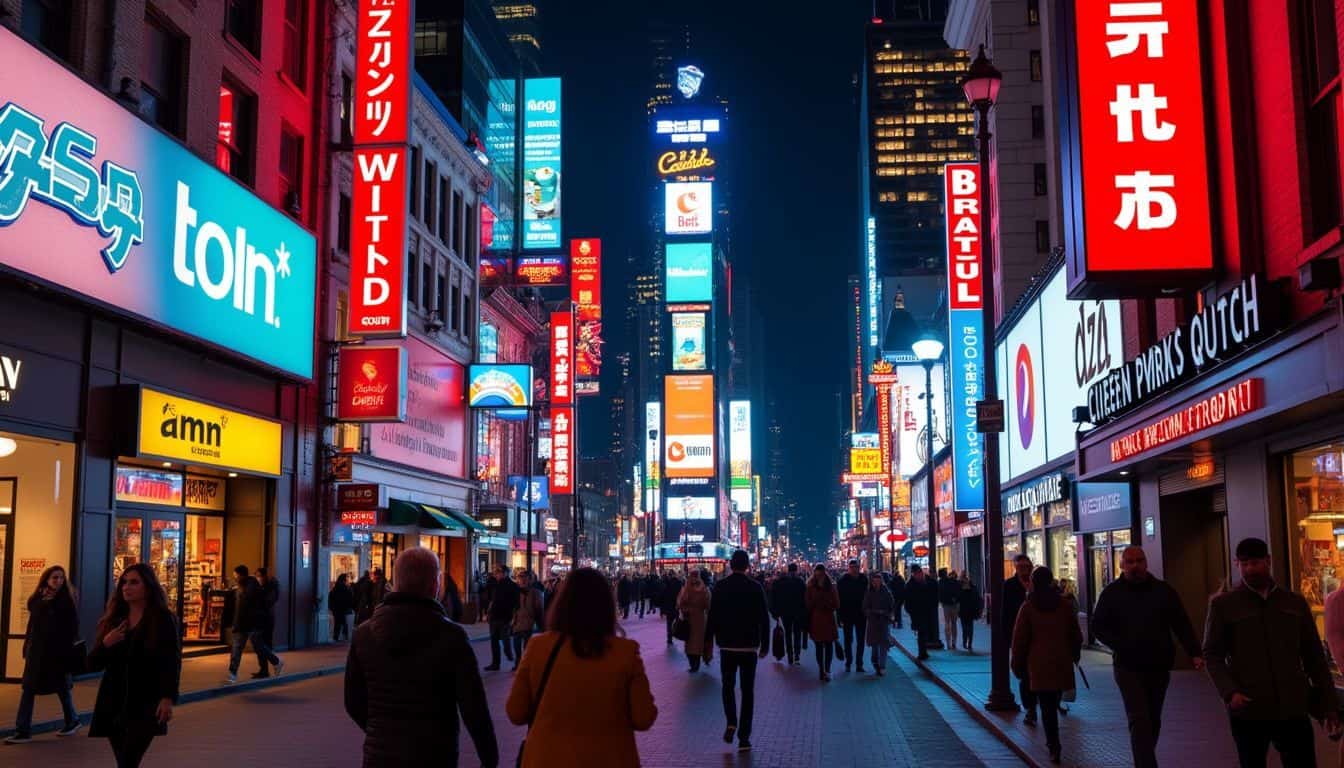
Branding in the real world is a wild ride – full of wins and flops. Want to see how big names soar or crash? Keep reading!
Successful Brand Case Studies
Brand success stories inspire and teach us. Let’s dive into some standout examples that rocked the business world.
- Apple’s Comeback: In 1997, Apple was near bankruptcy. Steve Jobs returned and flipped the script. He axed 70% of products, focusing on simplicity and innovation. The “Think Different” campaign sparked a revolution. Today, Apple tops global brand lists and boasts fierce customer loyalty. 22
- Nike’s “Just Do It” Magic: Nike’s 1988 slogan changed everything. It spoke to both athletes and couch potatoes. The message was clear, catchy, and motivating. Nike’s market share jumped from 18% to 43% in just ten years. Talk about a slam dunk! 22
- Coca-Cola’s Century-Long Fizz: Coca-Cola’s been around since 1886. Its logo barely changed in over 100 years. That’s some serious staying power! They’ve mastered consistency across all touchpoints. From TV ads to vending machines, you always know it’s Coke.
- Disney’s Happily Ever After: Disney isn’t just a company, it’s a feeling. They’ve built a brand that spans generations. From theme parks to movies, Disney creates magic. Their attention to detail is legendary. Even their trash cans are themed! No wonder they’re a top brand globally. 23
- Amazon’s Customer Obsession: Jeff Bezos started Amazon in his garage. Now it’s a global giant. How? By putting customers first. Their one-click ordering and fast shipping changed the game. Amazon’s brand promise? To be Earth’s most customer-centric company. Looks like it’s working!
- Google’s Smart Simplicity: Google’s homepage is famously bare. Yet, it’s the world’s most visited website. They focus on what matters: search. Google became a verb – that’s branding gold! They keep innovating while staying true to their core mission.
- Starbucks’ “Third Place” Strategy: Starbucks isn’t just about coffee. They sell an experience. Howard Schultz wanted to create a “third place” between home and work. Comfy chairs, free Wi-Fi, and baristas who know your name. It’s a recipe for brand loyalty that keeps customers coming back for more.
- Tesla’s Electric Revolution: Elon Musk made electric cars cool. Tesla doesn’t spend on ads. Instead, they rely on product innovation and Musk’s star power. They’ve built a brand that’s synonymous with the future of transportation. Not bad for a company that’s younger than Facebook!
Analyzing Brand Failures
Brand failures can teach us valuable lessons. Let’s dive into some notable flops and what we can learn from them.
- Gap’s Logo Disaster: In 2010, Gap changed its iconic logo. Fans hated it. The company quickly backtracked. 24
- Pepsi’s Ad Mishap: Their 2017 ad with Kendall Jenner sparked outrage. It seemed to trivialize serious social issues.
- BP’s Costly Mistake: The 2010 oil spill led to a $105 billion loss. It shows how one event can damage a brand’s image.
- Toys R Us Comeback: After closing in 2018, they’re back in Macy’s stores. It’s a fresh start for the beloved toy brand.
- Consistency is Key: Many brands fail due to mixed messages. A clear, steady voice builds trust with customers.
- Know Your Audience: Brands that ignore their target market often stumble. Research and feedback are crucial. 25
- Adapt or Die: Once-popular brands vanish when they don’t keep up with trends. Flexibility is vital in today’s fast-paced world.
- Social Media Pitfalls: One wrong tweet can cause a PR nightmare. Brands must be careful on these platforms.
Crafting a Distinct Brand Identity

Crafting a distinct brand identity is like giving your business a personality. It’s how you stand out in a sea of sameness. Want to know the secret sauce? Keep reading!
Developing a Unique Brand Voice
A brand’s voice is its personality in words. It’s how a company talks to its fans. Think of it like a cool friend who always knows what to say. Fenty Beauty nails this with its bold, real talk.
They don’t just sell makeup; they chat with you about it. 26
Creating a brand voice isn’t a one-time thing. It’s an ongoing process. You need to keep checking if it still fits. Does it still click with your audience? Is it still true to who you are? A good brand voice guide helps everyone in the company stay on the same page.
It lists key traits, words to use, and writing examples. This way, whether it’s a tweet or an email, it all sounds like… well, you. 27
Ensuring Consistency Across Touchpoints
Keeping your brand consistent across all touchpoints is crucial. It’s like making sure the famous Apple logo looks the same everywhere you see it.
Brands need 5–7 impressions for folks to remember them. That’s why clear guidelines and centralized asset management are important. They help keep your message, promise, and customer experience in sync.
It’s about more than looking good – it’s about building trust. 28
I’ve seen firsthand how a strong visual identity can make or break a brand. Colors, typefaces, and logo variations all play a part. But it’s about more than looks. Your brand voice matters too.
Consistency in how you talk to customers across social media, emails, and ads is essential. It’s like coding – one small error can mess up the whole program. So, keep your brand’s code clean and error-free across all platforms! 29
The Future of Branding
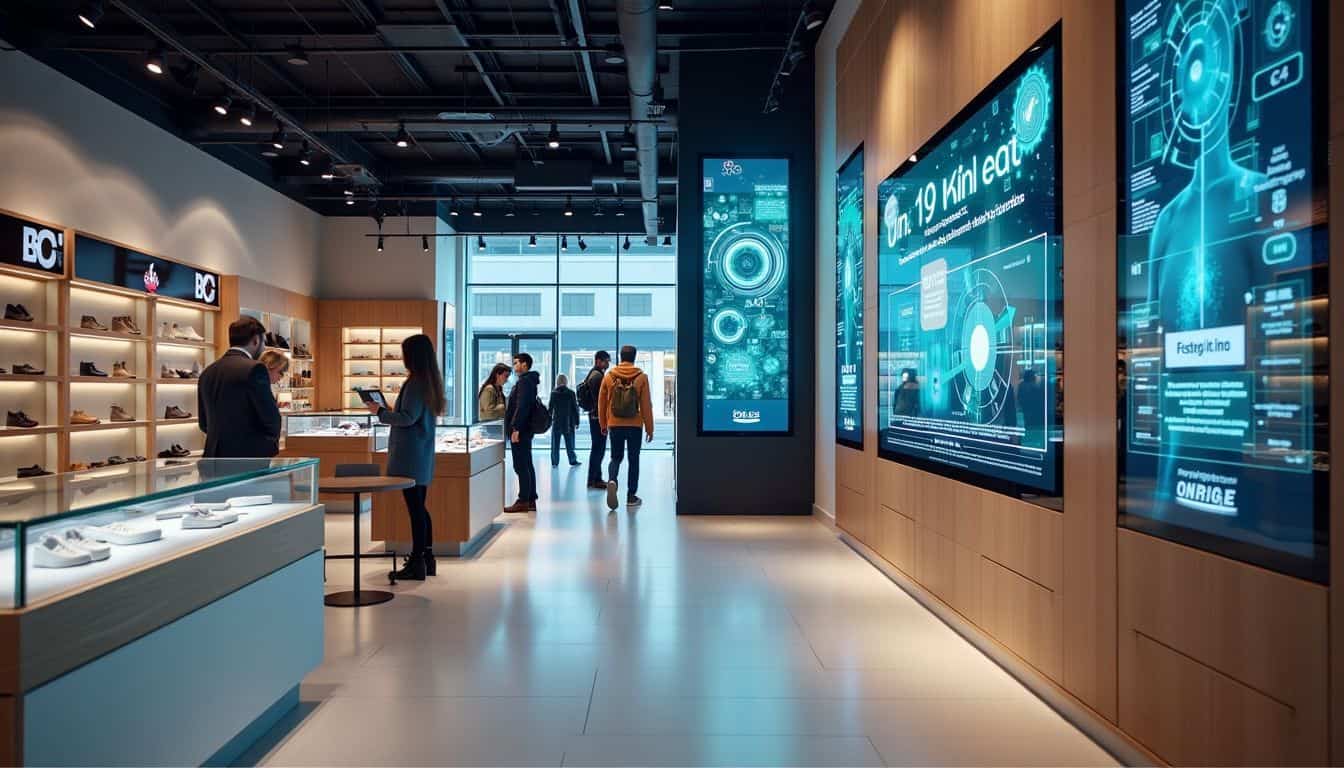
The future of branding is all about tech and personal touch. AI and VR will shake things up big time. But hey, don’t forget the human side! Brands that mix high-tech with heart will win.
Want to know more? Keep reading!
Upcoming Trends and Predictions
Branding’s future is all about connection. Purpose-driven brands will rule the roost, especially with Gen-Z. They want more than just products – they crave meaning. Authenticity is key.
Brands that keep it real and transparent will win big time. Digital tech is shaking things up too. AR and VR are changing how we interact with brands. It’s not just about seeing anymore; it’s about experiencing. 30User-generated content is the new gold. Smart brands are tapping into their fans’ creativity. It’s like free advertising, but way more trustworthy. And here’s a cool trend: regenerative branding.
It’s not just about not hurting the planet – it’s about making it better. Oh, and forget minimalism. Maximalism is in. Bold colors, wild patterns – the works. Brands are getting loud and proud. 31
Technology’s Role in Brand Evolution
Tech is shaking up branding big time. AI’s making things personal and smart. It’s like having a crystal ball for customer needs. Cool stuff like AR and VR? They’re not just for games.
They’re helping brands connect with folks on a whole new level. It’s like stepping into a brand’s world. 32Data’s the new gold in branding. It helps brands figure out what folks want before they even know it. And get this – people are all about saving the planet now. Brands that go green? They’re winning hearts left and right.
It’s not just about looking good anymore. It’s about doing good, too. Oh, and don’t forget your email signature.
It’s a tiny but mighty part of your brand in the digital world. 5
People Also Ask
What’s the big deal about branding?
Branding is like your business’s fingerprint. It’s how folks know you’re you. Think Kylie Cosmetics or Chobani. Their logos, colors, and even how they talk to customers make them stand out. Good branding sticks in people’s minds and can give you an edge over competitors.
How do I cook up a solid brand strategy?
First, know your crowd. Do some digging to understand what makes them tick. Then, whip up a mission statement that speaks to them. Pick colors and fonts that match your vibe. Don’t forget to sprinkle in some personality on social media. It’s all about being true to who you are while catching eyes.
Can my brand hang out on social media?
You bet! Social platforms are like a party for brands. Post eye-catching pics on Instagram, drop witty tweets, or start a hashtag campaign. But remember, it’s not just about shouting into the void. Chat with your followers, share behind-the-scenes peeks, and show your human side.
Is personal branding just for big shots?
Nope! Whether you’re a social media influencer or a local plumber, personal branding matters. It’s about showcasing your skills and building trust. Share your know-how, engage with folks online, and be consistent. Over time, you’ll become the go-to expert in your field.
How can I measure if my brand’s making waves?
Keep your eyes peeled for brand recognition and awareness. Are more people talking about you? Is your logo getting nods of familiarity? You can also track social media engagement, website traffic, and sales. Don’t shy away from asking customers directly what they think of your brand, too.
Can my brand evolve over time?
Absolutely! Brands aren’t set in stone. Look at how Mailchimp’s grown from just emails to a full-on marketing platform. As your business changes, your brand can too. Just make sure any shifts align with your core values and don’t confuse your loyal fans. Small tweaks or big overhauls – it’s all part of keeping your brand fresh and relevant.
References
^ https://blog.vmgstudios.com/what-is-brand-essence
^ https://www.thebrandingjournal.com/2015/10/what-is-branding-definition/
^ https://brandpurist.com/branding-advice/branding-process-explained/
^ https://hellobrands.com.au/articles/the-evolution-of-branding-a-historical-perspective/
^ https://www.ncbi.nlm.nih.gov/pmc/articles/PMC10010228/
^ https://www.vistaprint.com/hub/history-of-branding?srsltid=AfmBOoq5nXn4ZkVJuqvh-l30RU32xJa6Gb98zCUJSubsNdnG7qyBRdVu (2024-05-23)
^ https://moinagency.com/embracing-change-why-brand-evolution-is-essential-in-branding/
^ https://msbfile03.usc.edu/digitalmeasures/choong/intellcont/The%20role%20of%20brand%20logos%20in%20firm%20performance-1.pdf
^ https://www.thebrandingjournal.com/2023/05/visual-identity/ (2023-09-19)
^ https://www.elementsbrandmanagement.co.uk/the-key-elements-to-building-a-successful-brand/ (2023-10-19)
^ https://limelightmarketing.com/brand-strategy-mission-vision-values-brand-personality/
^ https://www.forbes.com/sites/rhettpower/2024/07/07/the-art-of-brand-differentiation-strategies-for-lasting-impact/
^ https://www.personadesign.ie/brand-differentiation-30-ways-to-differentiate-your-brand/
^ https://www.ncbi.nlm.nih.gov/pmc/articles/PMC9521331/
^ https://squibble.design/branding/why-branding-matters/
^ https://www.ncbi.nlm.nih.gov/pmc/articles/PMC10294934/
^ https://www.sciencedirect.com/science/article/pii/S2199853122007107
^ https://www.parkerwhite.com/insights/brand-strategy-for-success
^ https://www.forbes.com/councils/forbesagencycouncil/2021/03/24/the-importance-of-branding-in-business/ (2021-03-24)
^ https://www.thebrandingjournal.com/2023/03/brand-identity/ (2023-09-21)
^ https://selahcreativeco.com/blog/brand-vs-branding-vs-brand-identity-whats-the-difference
^ https://www.thoughtlab.com/blog/the-science-of-successful-branding-case-studies-and/ (2023-11-27)
^ https://medium.com/@locallycreativelab/branding-case-studies-analysing-successful-branding-campaigns-9b35a663f58f
^ https://penfriend.ai/blog/lessons-from-failed-authentic-branding-attempts (2024-04-14)
^ https://www.sciencedirect.com/science/article/pii/S0148296323004204
^ https://sproutsocial.com/insights/brand-voice/ (2023-06-13)
^ https://www.linkedin.com/pulse/8-effective-strategies-creating-distinctive-brand-identity-fanaras
^ https://marcom.com/build-trust-brand-consistency/
^ https://www.creatopy.com/blog/brand-consistency/ (2022-07-29)
^ https://www.brandedagency.com/blog/the-future-of-branding-top-trends-in-2024 (2023-12-27)
^ https://www.threerooms.com/blog/branding-trends-for-2024
^ https://r3mx.com/the-future-of-branding-how-technology-is-shaping-the-industry/
